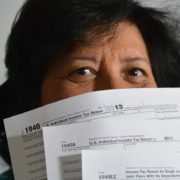Some popular tax benefits renewed for 2019
WASHINGTON ― The Internal Revenue Service reminds taxpayers that it is processing tax returns claiming benefits extended or changed by recent legislation. Most taxpayers can file when they are ready – and as they normally would – if they are eligible for one or more of these benefits and claim them on their 2019 federal tax return.
Taxpayers can get the most out of various tax benefits and get useful tips on preparing their 2019 federal income tax returns by consulting a free, comprehensive tax guide available on IRS.gov. Publication 17, Your Federal Income Tax, features an in-depth look at on tax changes for 2019 including recent legislative changes and covers the general rules for filing a federal income tax return. It supplements the information contained in the tax form instruction booklet. This 277-page guide – available online as a PDF, HTML or eBook − also provides thousands of interactive links to help taxpayers quickly get answers to their questions.
Certain individual tax provisions extended
- Deduction for above-the-line qualified tuition and related expenses claimed on Form 8917, Tuition and Fees Deduction.
- Deduction for mortgage insurance premiums treated as qualified residence interest, claimed on Schedule A, Itemized Deductions.
- Deduction for unreimbursed medical and dental expenses as the floor was lowered to 7.5% of adjusted gross income and claimed on Schedule A, Itemized Deductions.
- Credit for nonbusiness energy property claimed on Form 5695, Residential Energy Credits.
- Income exclusion for canceled debt for qualified principal residence indebtedness where the taxpayer defaulted on a mortgage that they took out to buy, build or substantially improve their main home claimed on Form 982, Reduction of Tax Attributes Due to Discharge of Indebtedness.
Kiddie Tax modification
Recent legislation also modified the rules related to what’s commonly called the “Kiddie Tax” for certain children who may be able to calculate their tax based on the tax rate of the child’s parent. For tax year 2019, taxpayers can elect this alternative application for the tax on their unearned income by completing Form 8615, Tax for Certain Children Who Have Unearned Income, differently depending on their election. See the Form 8615 instructions for Part II Tax for more information. Taxpayers who make this election for 2019 must include a statement with their return specifying “election to modify tax of unearned income.” The statement can be made on the return (for example, on line 7 or at the top of Form 8615) or on an attachment filed with the return.
Disaster tax relief
Disaster tax relief (PDF) was also enacted for those affected by certain Federally declared disasters. This includes an increased standard deduction based on qualified disaster losses and an election to use 2018 earned income to figure the 2019 earned income credit and additional child tax credit.
Certain taxpayers affected by federally declared disasters may be eligible for an automatic 60-Day extension for filing, paying their taxes, and other administrative deadlines.
Special rules may apply for taxpayers who received a distribution from an individual retirement arrangement, profit-sharing plan or retirement plan and their main home was in one of the federally declared disaster areas eligible for these special rules.
Amended returns
Three tax laws were enacted on December 20, 2019. The Taxpayer Certainty and Disaster Tax Relief Act of 2019 extended certain previously expired tax benefits to 2018 and 2019 and provided tax relief for certain incidents federally declared as disasters in 2018 and 2019. The extended benefits and the disaster relief may now be claimed on 2018 and 2019 tax returns, by those who qualify.
The Setting Every Community Up for Retirement Enhancement Act of 2019 (the SECURE Act) made other changes, such as increasing the penalty for failing to file a tax return and modifying the rules related to the taxation of unearned income of certain minor children. The SECURE Act relaxed certain retirement plan contribution and distribution requirements beginning Jan. 1, 2020.
While the IRS has released the vast majority of tax year 2019 products, the IRS must also update 2018 tax products affected by these legislative changes. Taxpayers may have to file an amended return to claim these benefits on their 2018 return. See Form 1040-X, Amended U.S. Individual Income Tax Return, and its instructions at IRS.gov/form1040x. Impacted 2018 forms, instructions and schedules are being revised to reflect the legislation enacted December 20, 2019. The updated 2018 revisions will be posted to IRS.gov for taxpayers to file amended returns accurately.
The IRS works closely with tax professionals and partners in the tax return preparation and tax software industries to prepare for and address issues that may occur during the filing season. This ongoing collaboration ensures that taxpayers can continue to rely on the IRS, tax professionals and tax software programs when it’s time to file their returns. As always, filing electronically and choosing direct deposit is the fastest, most accurate and most convenient way to receive a tax refund.
More resources:
Call WXC for more details.













